
Outdoor Winter Portrait Photography offers a unique opportunity to capture striking and atmospheric images. With the right approach, the frosty landscapes and soft winter light can enhance your portraits, creating captivating visuals. In this guide, we’ll explore 11 essential tips to help you master the art of outdoor winter portrait photography, along with quick tips to enhance your results. please stay with ShutterRealm.
Why Outdoor Winter Portrait Photography Stands Out
Winter brings a magical aesthetic—snow-covered landscapes, soft diffused light, and a crisp atmosphere. Outdoor winter portraits allow photographers to experiment with creative compositions, natural textures, and emotional storytelling. However, cold temperatures and unpredictable lighting present unique challenges.
1. Prioritize Proper Clothing for Your Model in Outdoor Winter Portrait Photography
Ensure your subject is dressed warmly and comfortably. Layers, cozy scarves, and stylish coats not only keep them warm but also add texture and character to the photos. Neutral tones or bold colors like red and green can pop beautifully against snowy backdrops.
Quick Tip: Suggest your subject wear thermal layers under their outfit for extra warmth without sacrificing style.
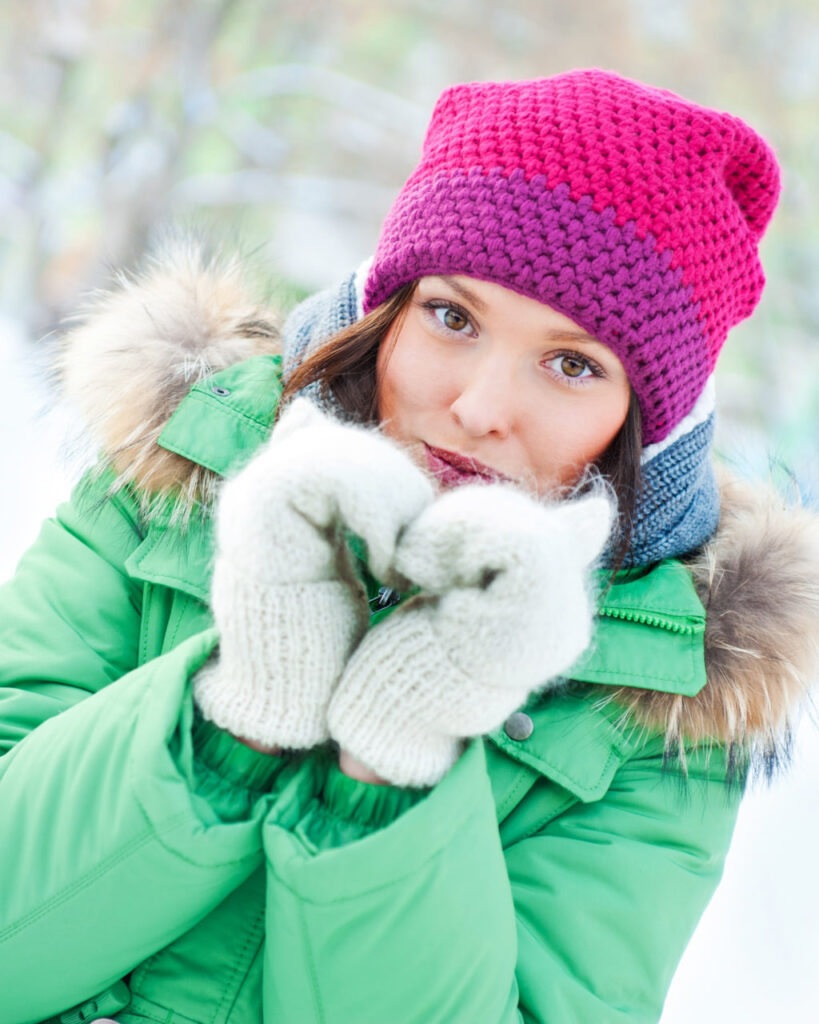
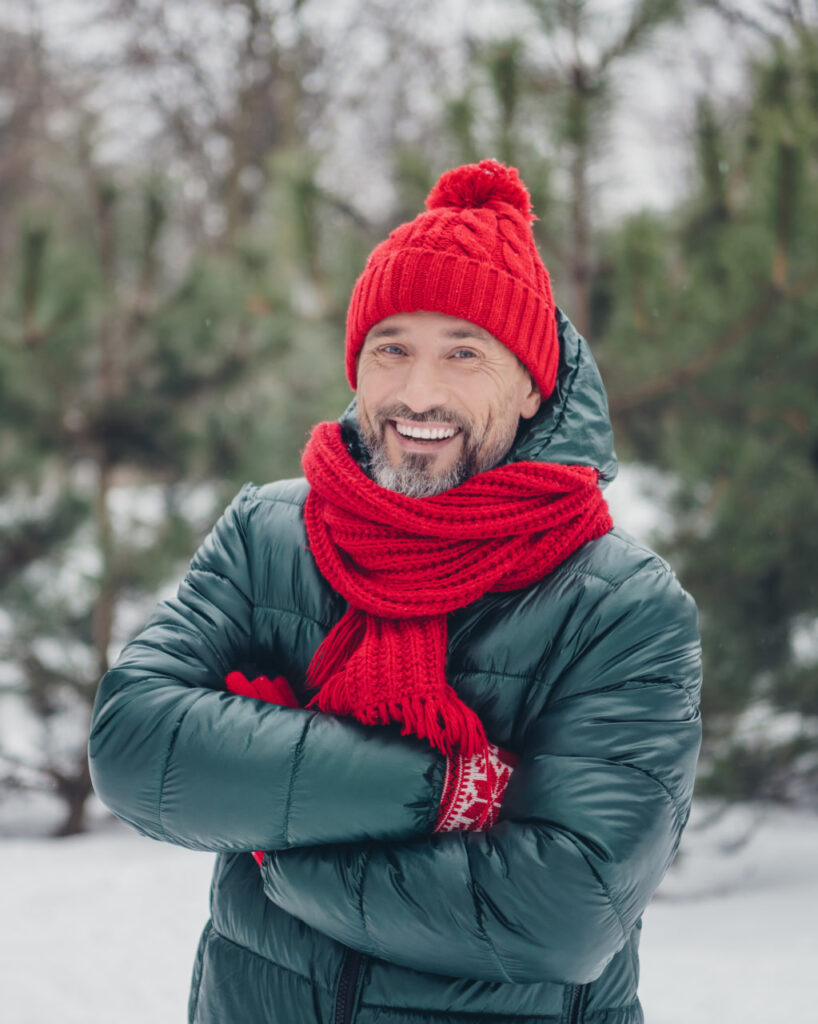

2. Make the Most of Natural Light in Outdoor Winter Portrait Photography
Winter sunlight tends to be softer, especially during golden hours. Plan your shoot during sunrise or sunset to capture the warm tones and gentle light. Overcast days are also ideal, as clouds act like a natural diffuser, preventing harsh shadows.
Quick Tip: Position your subject so that sunlight comes from a slight angle, avoiding harsh shadows or complete backlighting unless you’re intentionally aiming for a silhouette effect.
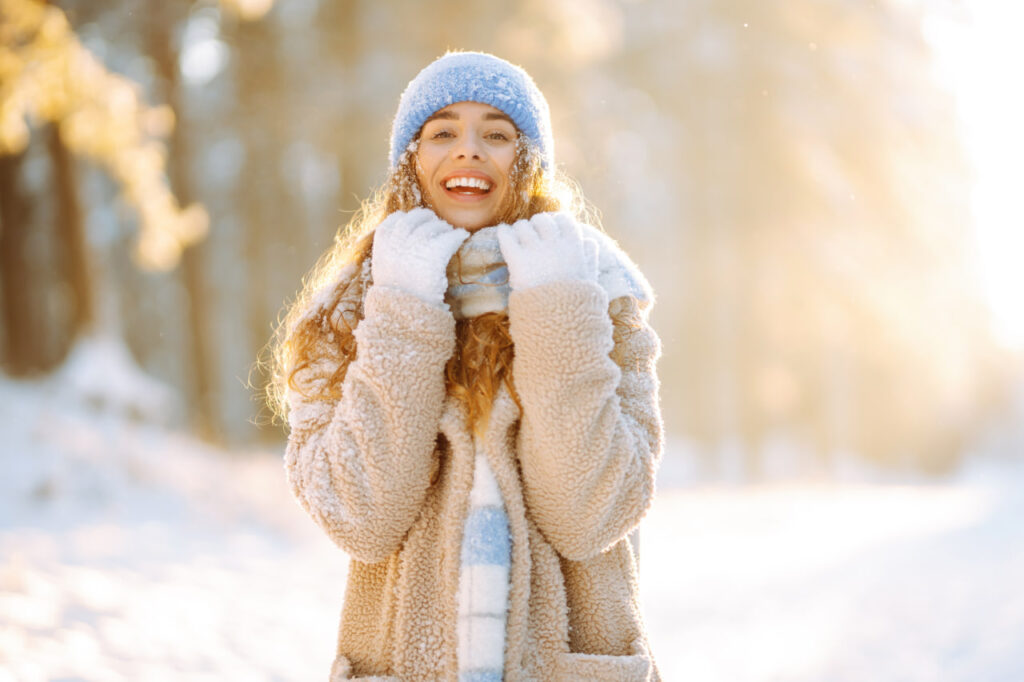
3. Use a Wide Aperture for Soft Backgrounds in Outdoor Winter Portrait Photography
Using a wide aperture (e.g., f/2.8 or f/1.8) helps create a beautiful bokeh effect. This blurs the background, allowing the subject to stand out against snowy or textured surroundings.
Quick Tip: Keep a reasonable distance between your subject and the background to enhance the bokeh effect.

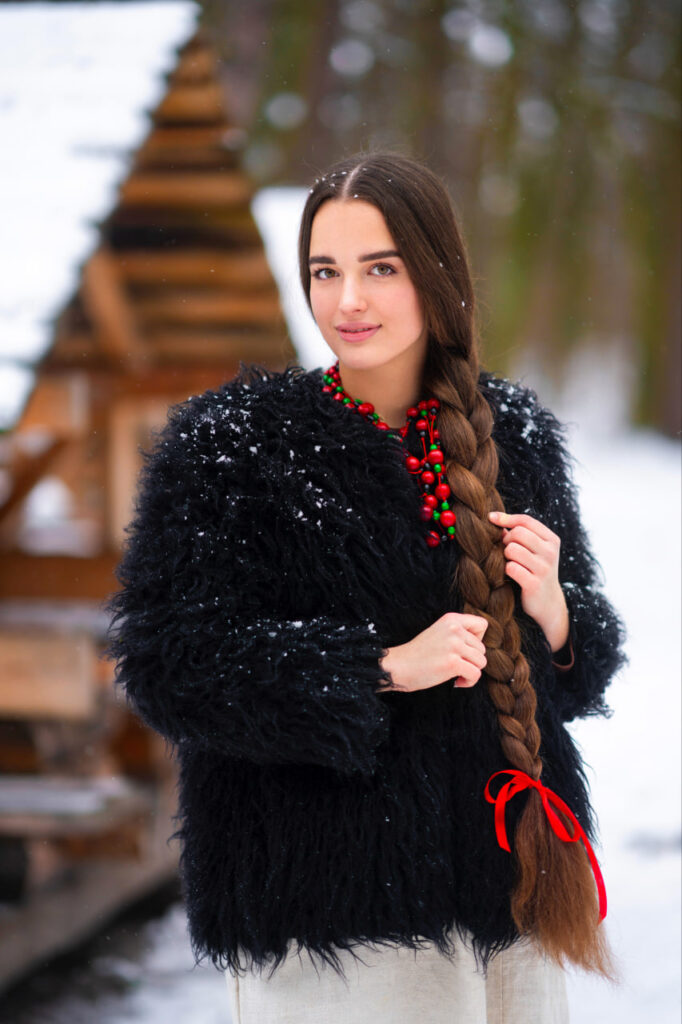
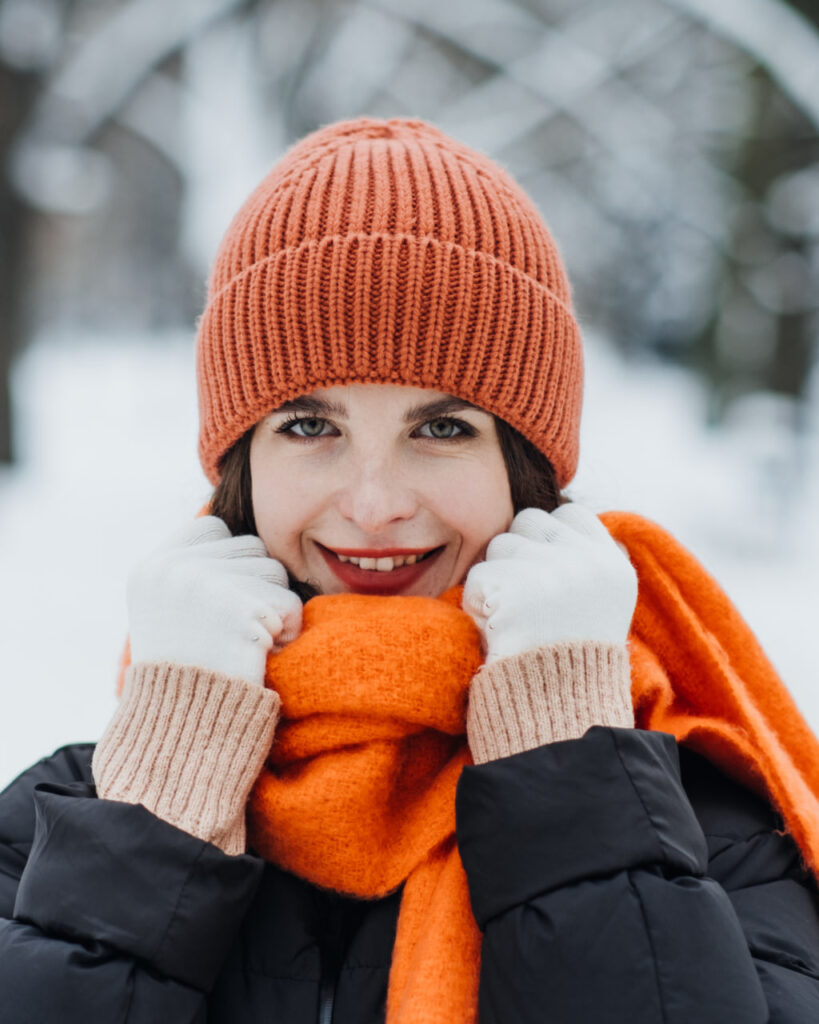
4. Protect Your Gear in Outdoor Winter Portrait Photography
Cold weather can drain your camera battery quickly and affect lens performance. Keep spare batteries in a warm pocket, and use lens hoods to prevent condensation and glare from snow.
Quick Tip: Use silica gel packets in your camera bag to absorb moisture and prevent fogging.

5. Focus on Contrast and Colors in Outdoor Winter Portrait Photography
Winter landscapes are often monochromatic. Create contrast by incorporating colorful props, clothing, or accessories. A brightly colored scarf, hat, or gloves can provide a vibrant visual pop against the white background.
Quick Tip: Use complementary colors like red and white or green and beige to create visual harmony.
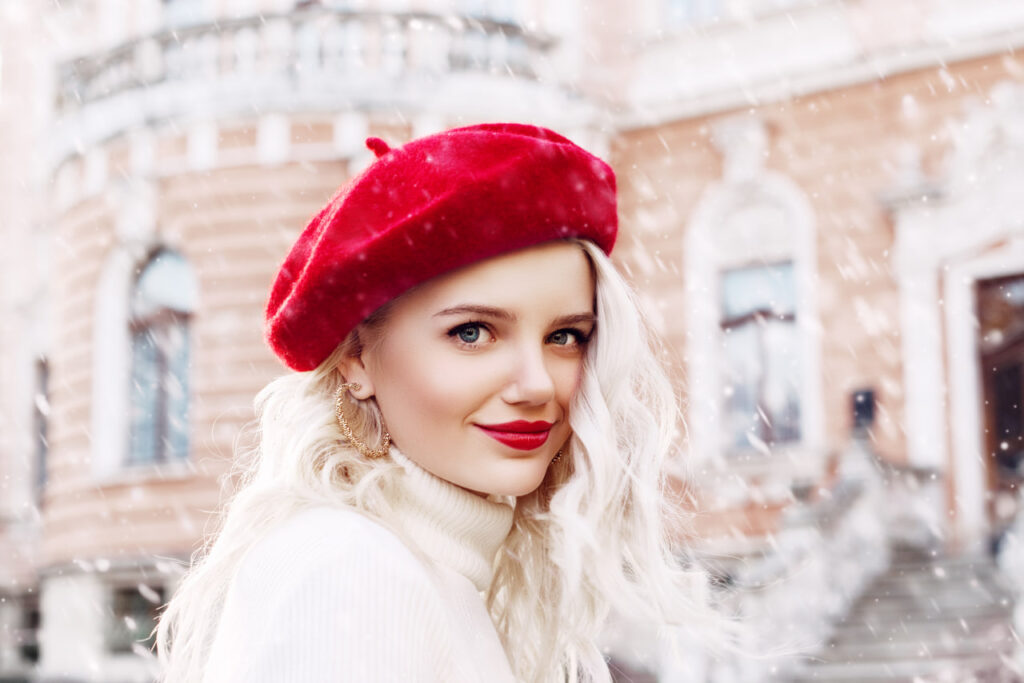
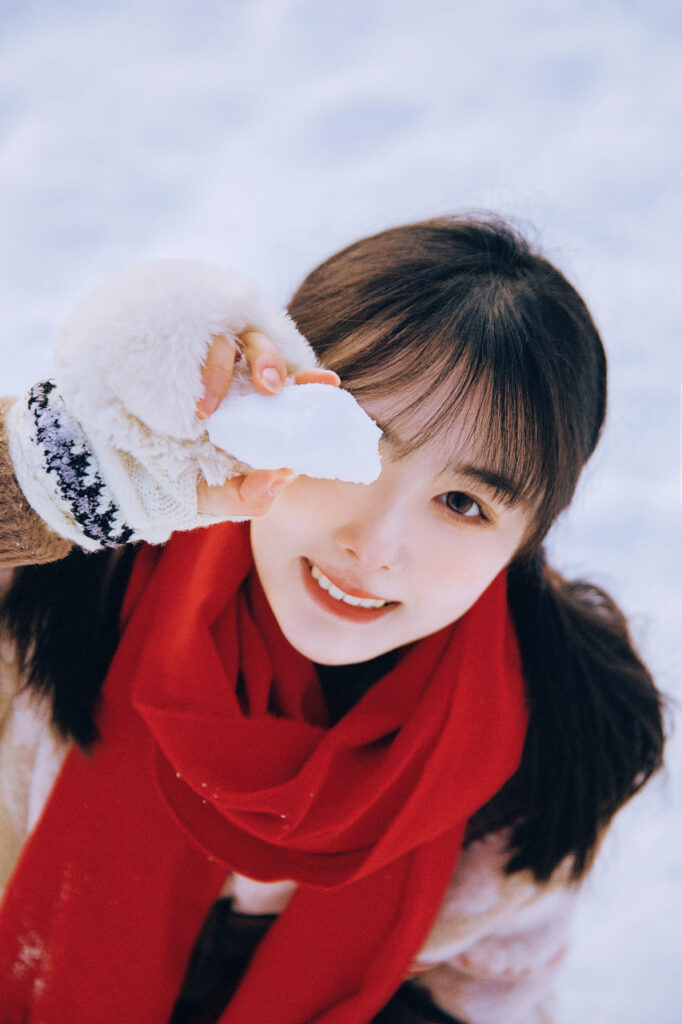
6. Capture Natural Poses in Outdoor Winter Portrait Photography
Winter portraits often evoke genuine emotions. Encourage your subject to interact with the environment—play with snow, sip a hot drink, or wrap themselves in a blanket. These candid moments create relatable and authentic images.
Quick tip: Tell a funny story or play upbeat music to make your model feel relaxed and cheerful.
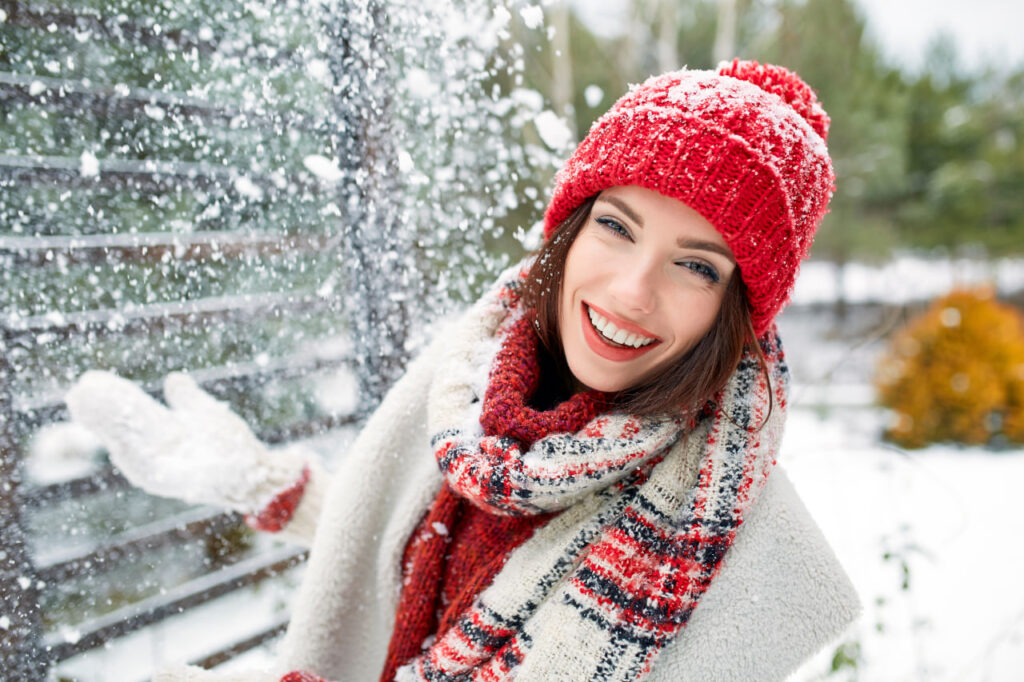
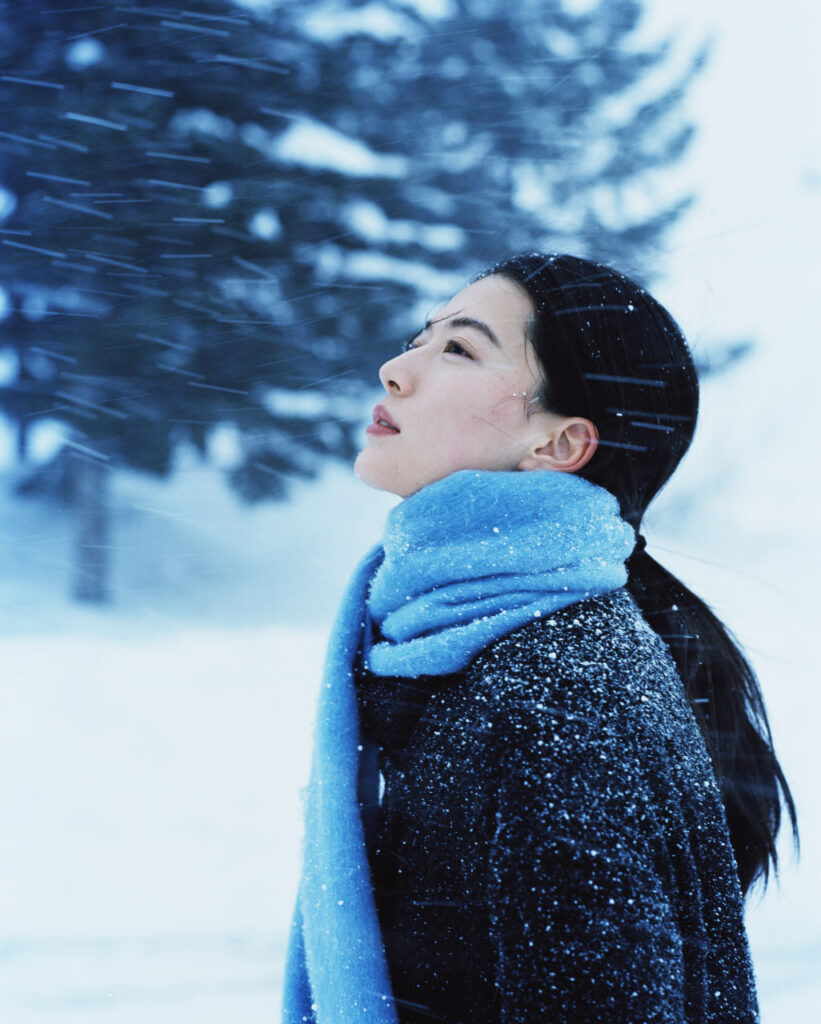
7. Experiment with Different Angles in Outdoor Winter Portrait Photography
Don’t limit yourself to eye-level shots. Try shooting from above for a bird’s-eye view or get low to the ground for a dynamic perspective. Angle experimentation adds creativity to your shots.
Quick Tip: Use a step stool or crouch low to achieve unique perspectives in your photos.
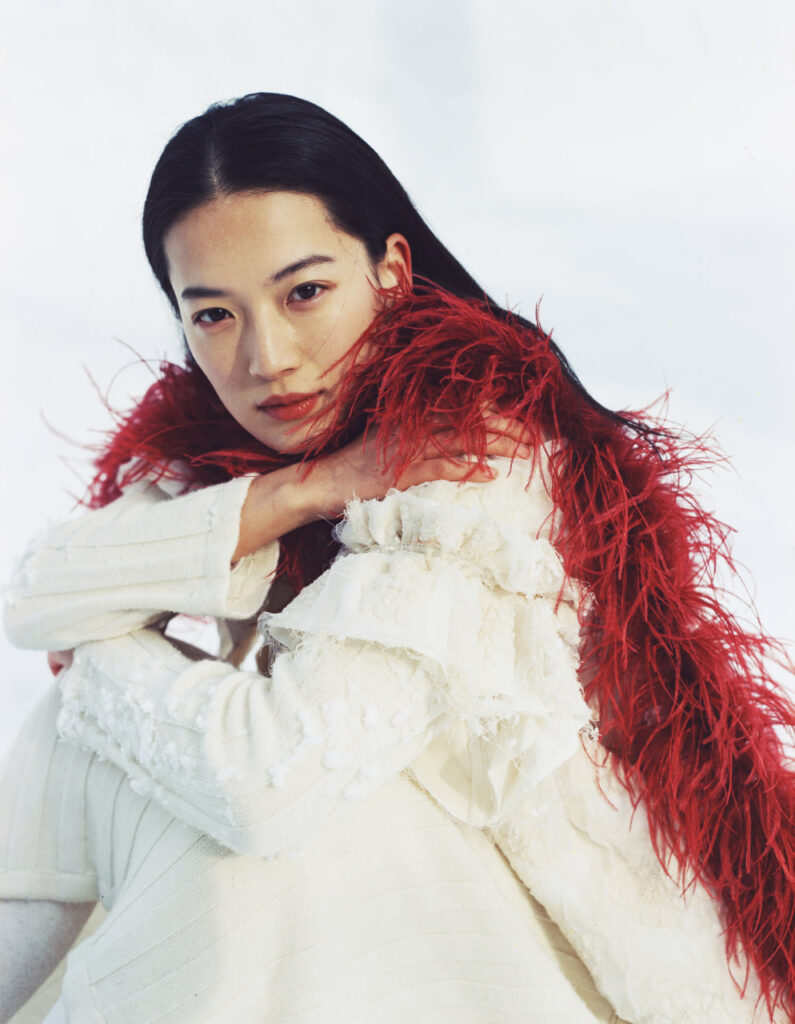
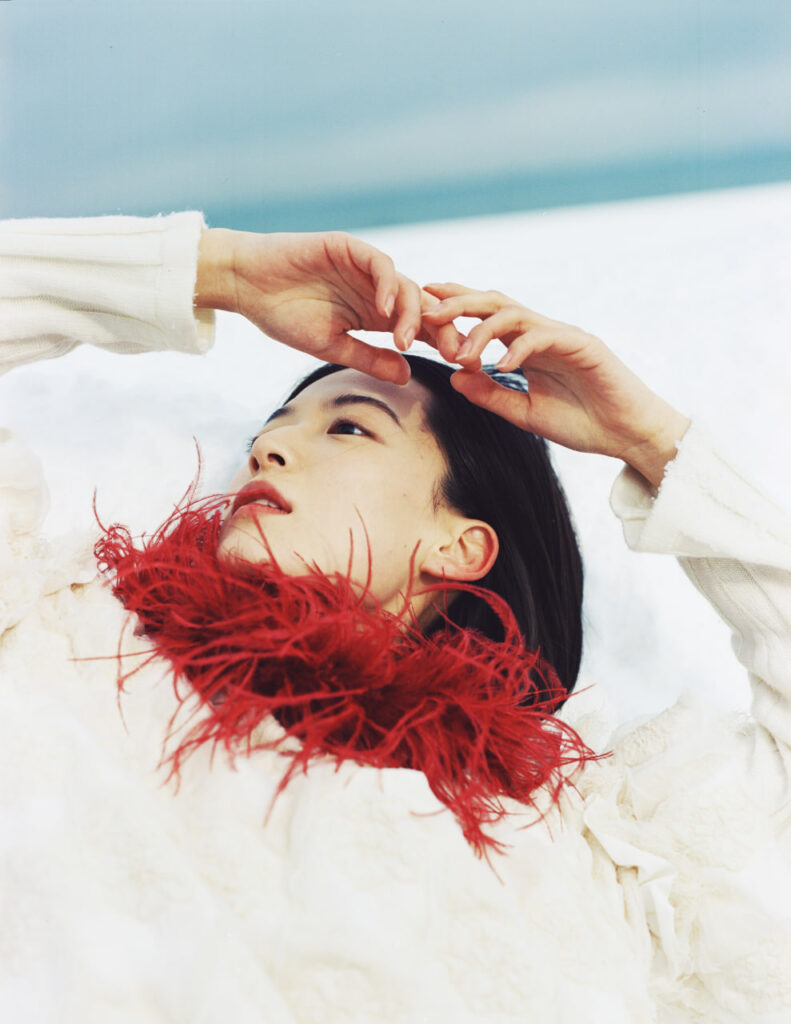
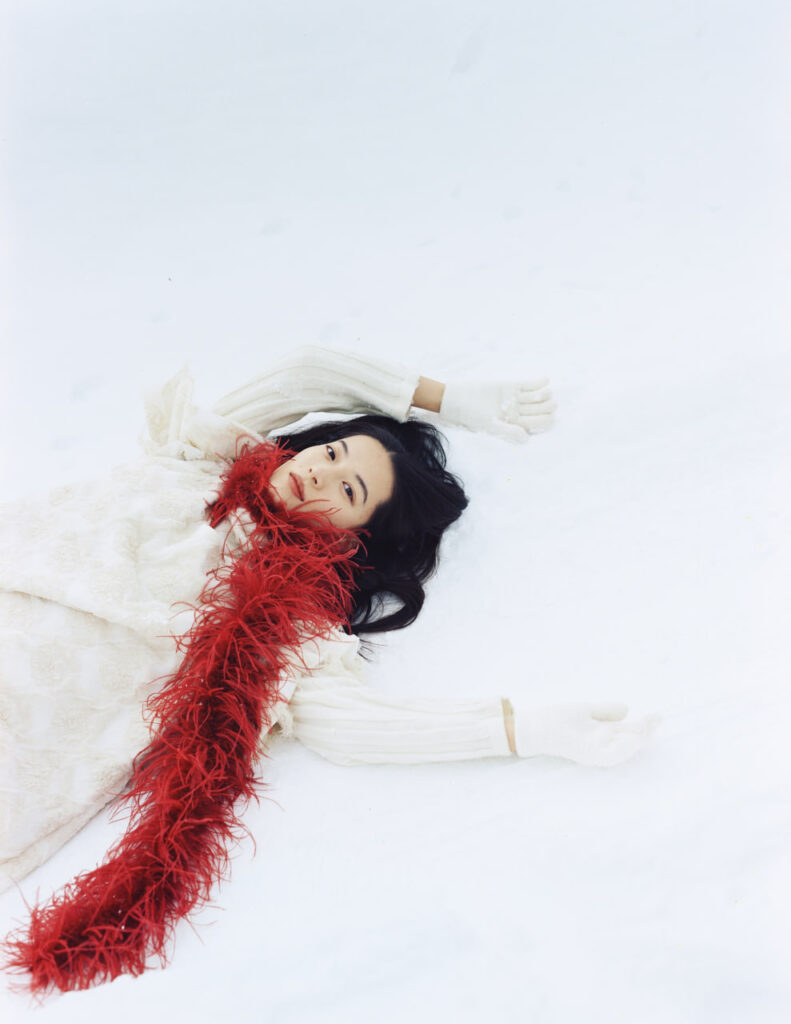
8. Use Props to Tell a Story in Outdoor Winter Portrait Photography
Incorporate winter-themed props like mugs of hot chocolate, fairy lights, or blankets. These details not only add warmth to the image but also tell a cozy winter story.
Quick Tip: Keep props simple and relevant to avoid overwhelming the frame.


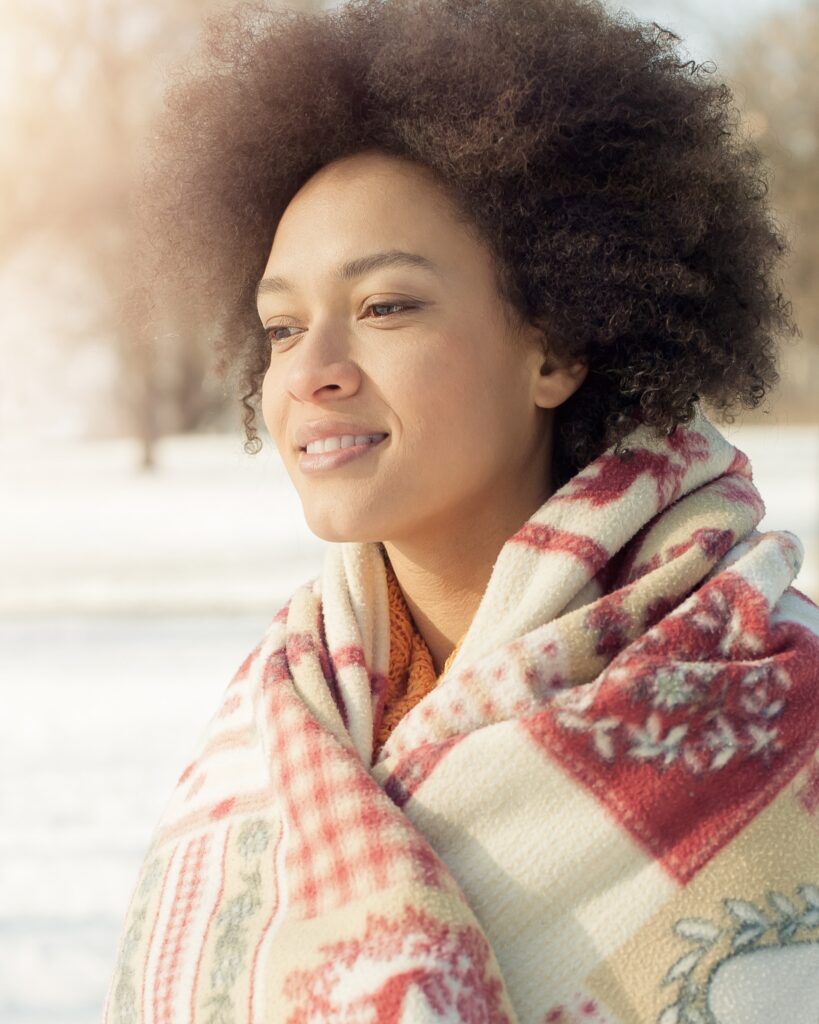
9. Adjust White Balance in Outdoor Winter Portrait Photography
Snow can often appear blueish in photos. Adjust the white balance to warmer tones in your camera settings or during post-processing. This adjustment helps create a more inviting and natural look.
Quick Tip: Use the “Cloudy” white balance setting for warmer tones in snowy conditions.
10. Keep Your Subject Comfortable and Happy
Cold weather can quickly become uncomfortable for your subject. Plan short sessions, provide warm breaks, and maintain an upbeat atmosphere. A comfortable subject results in more relaxed and natural portraits.
Quick Tip: Bring hand warmers or a thermos of hot tea to keep your subject cozy between shots.
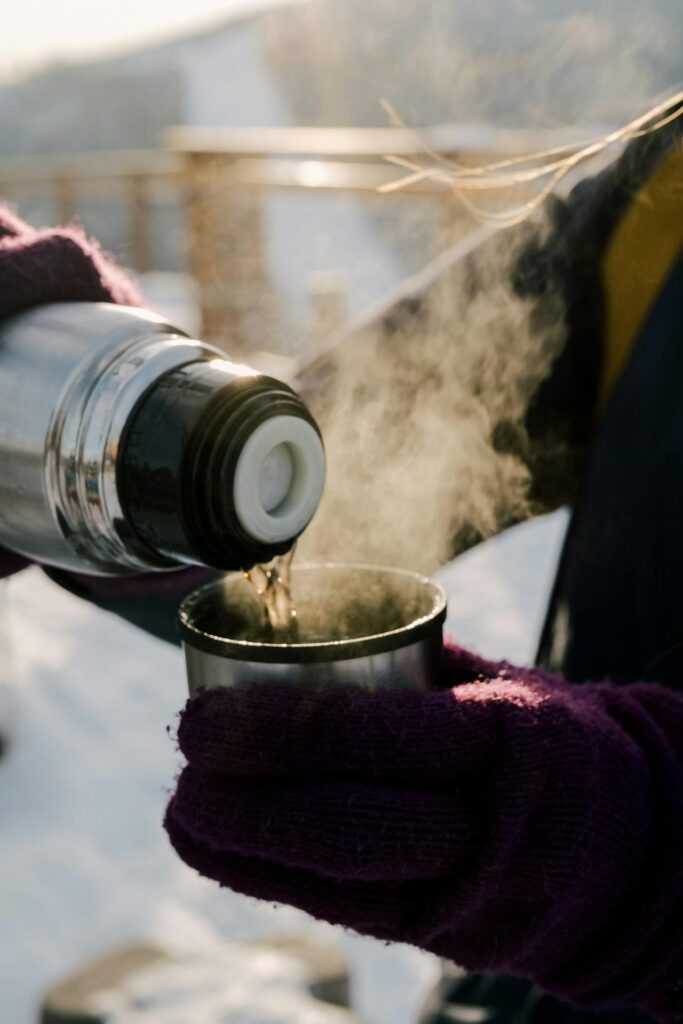
11. Edit Thoughtfully for Maximum Impact
In post-processing, enhance the winter vibe by slightly increasing contrast, boosting warmth, and refining details. Avoid over-editing—keep the image authentic and timeless.
Quick Tip: Use selective adjustments in editing to enhance eyes and skin tones without affecting the entire image.
Quick Recap of Key Tips:
• Dress your subject warmly.
• Utilize soft natural light.
• Experiment with wide apertures.
• Protect your camera equipment.
• Add vibrant colors for contrast.
• Capture candid, natural expressions.
• Explore different angles.
• Incorporate meaningful props.
• Adjust the white balance carefully.
• Prioritize subject comfort.
• Edit with subtlety.
Conclusion: Capture the Beauty of Winter Portraits
Outdoor winter portrait photography offers endless creative possibilities. With proper preparation, thoughtful composition, and these 11 essential tips, you can create memorable and captivating images that truly capture the magic of the season.
Start planning your winter portrait session today, and let the season’s charm inspire your photography journey!
